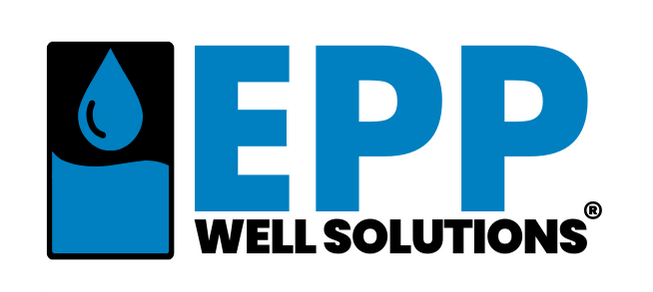The Importance of Preventing Overpumping in Well Systems
The steady flow of water from a well system is a lifeline for homeowners, supporting everything from morning showers to garden irrigation. But when that flow weakens or stops due to overpumping, the consequences can ripple through daily life, threatening both your water supply and the health of your well. Overpumping—drawing water faster than an aquifer can replenish—can lead to dry wells, damaged equipment, and depleted groundwater. Preventing this issue is critical for maintaining a reliable well system, especially for homes dealing with low well volume. This article explores why overpumping is a serious concern, its far-reaching impacts, and practical strategies to avoid it, emphasizing the role of advanced technology in protecting your water source.
Understanding Overpumping
Overpumping happens when water is extracted from a well at a rate that outstrips the aquifer’s ability to recharge. Aquifers, the underground reservoirs that feed wells, depend on rainfall and natural seepage to refill. When usage exceeds this natural replenishment, water levels drop, risking a dry well or pump exposure. This is particularly common in homes with high water demands or wells with limited output, where the aquifer struggles to keep up. Knowing your well’s gallons-per-minute (GPM) capacity is key to preventing overpumping. By staying within this sustainable limit, you can protect your water supply and avoid pushing the system beyond its capabilities.
Consequences for Your Well
The immediate impact of overpumping is felt in the well itself. When water levels fall too low, the pump may run dry, leading to overheating or mechanical failure. This halts water delivery and can result in expensive repairs or pump replacements. Sediment churned up by low water levels can clog pumps or pipes, reducing efficiency and requiring maintenance. Over time, repeated overpumping wears down the system, shortening its lifespan. For homes with low well volume, where output is already constrained, overpumping can quickly exacerbate these issues, making prevention essential to avoid frequent disruptions and costly fixes.
Strain on Groundwater Resources
Overpumping doesn’t just affect your well—it impacts the broader groundwater ecosystem. Aquifers are shared resources, supplying water corrigendum to neighboring wells, farms, and natural habitats. Excessive drawdown from one well can lower the local water table, affecting others who depend on the same aquifer. In areas with slow recharge rates, such as drought-prone regions, overpumping accelerates groundwater depletion, threatening long-term water availability. In extreme cases, it can cause aquifer compaction, permanently reducing its capacity. Preventing overpumping helps preserve these vital resources, ensuring they remain sustainable for communities and ecosystems alike.
Disruptions to Daily Life
Overpumping can turn routine tasks into frustrations. Low pressure or a dry well makes showering, cooking, or laundry challenging, especially for families using water simultaneously—think someone watering the lawn while another runs the dishwasher. Outdoor tasks, like filling livestock troughs or irrigating crops, become equally difficult. These disruptions underscore the practical need to prevent overpumping, as a consistent water supply is crucial for a functional home. By managing usage carefully, you can avoid the inconvenience of a strained or failing well, keeping daily life on track.
Technology as a Safeguard
Innovative technology plays a pivotal role in preventing overpumping. Systems like the Well Harvester® from Epp Well Solutions use automatic water draw adjustment to monitor well levels and limit extraction, ensuring the pump never runs dry. This overpump protection shields both the pump and the aquifer, extending the system’s reliability. High-pressure storage features let you stockpile water for peak demand, reducing the need for constant pumping. For shared wells or municipal connections, booster systems enhance flow without overburdening the primary source. These advancements make it easier to manage water use, keeping your well safe from overpumping’s dangers.
Practical Ways to Prevent Overpumping
Stopping overpumping begins with knowing your well’s capacity. A professional GPM assessment reveals how much water your well can sustainably provide, guiding you to schedule high-demand tasks—like laundry or irrigation—thoughtfully. Water-efficient appliances, such as low-flow showerheads or dual-flush toilets, cut overall consumption, easing the load on your well. Outdoors, drought-tolerant landscaping or drip irrigation minimizes waste. Real-time usage monitoring, available in some modern systems, helps you stay within safe limits. Regular maintenance, like inspecting pumps and pressure tanks, ensures optimal performance, reducing the risk of overpumping-related issues.
Rainwater Harvesting for Balance
Rainwater harvesting can reduce dependence on your well, lowering the chance of overpumping. By setting up rain barrels or cisterns, you can collect rainwater during wet seasons for use during high-demand periods. This supplemental water is ideal for non-potable tasks like gardening, car washing, or livestock care, preserving well water for household needs. Even in regions with sparse rainfall, harvested water offers a valuable buffer. Keep your collection system clean and filtered to avoid contamination. Pairing rainwater harvesting with smart water management creates a balanced approach, protecting your well from overuse.
A Commitment to Sustainability
Preventing overpumping goes beyond safeguarding your well—it’s a commitment to responsible water use. Groundwater is a shared, finite resource, and overuse by one household can strain aquifers, impacting neighbors and local ecosystems. In water-scarce areas, mindful management is critical to maintaining access for all. By preventing overpumping, you help ensure aquifers remain viable, supporting communities and the environment. This broader perspective highlights the importance of sustainable practices, making your efforts part of a collective push for water security.
Preventing overpumping is vital for keeping your well system reliable, protecting groundwater, and avoiding disruptions to daily life. The risks—equipment damage, aquifer depletion, and water shortages—are too significant to overlook. By understanding your well’s limits, adopting technologies like automatic draw adjustment, conserving water, and using rainwater harvesting, you can steer clear of overpumping’s pitfalls. These steps not only preserve your well system but also contribute to a sustainable water future. Act now to protect your well, ensuring it delivers the water your home needs, day after day.


